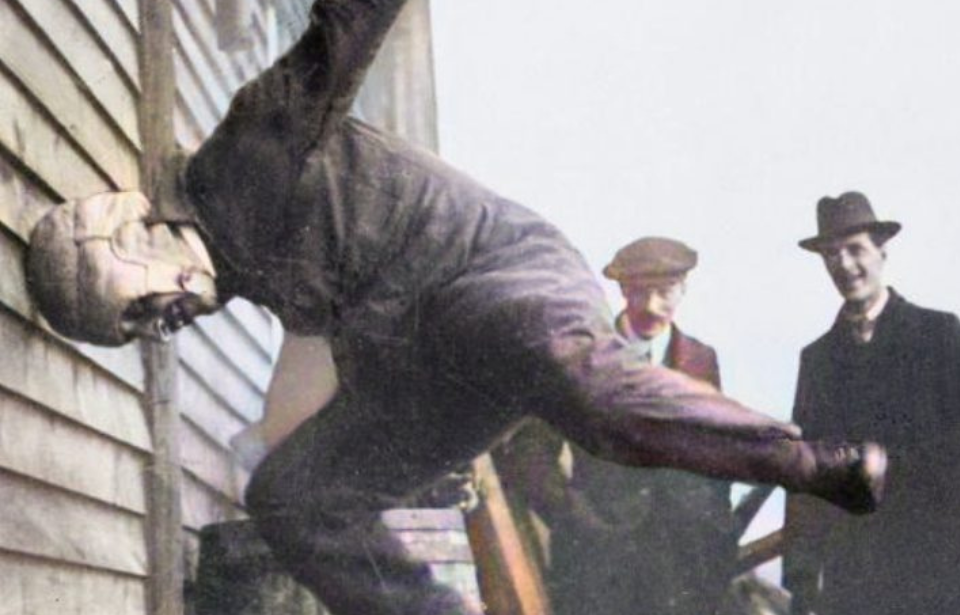Photographs are a great way to memorialize and remember historical events. However, the issue with famous historical photographs is that they only show one side of the event. Here, we have uncovered candid photos that show us a different side of history.
1. Titanic survivors row to safety
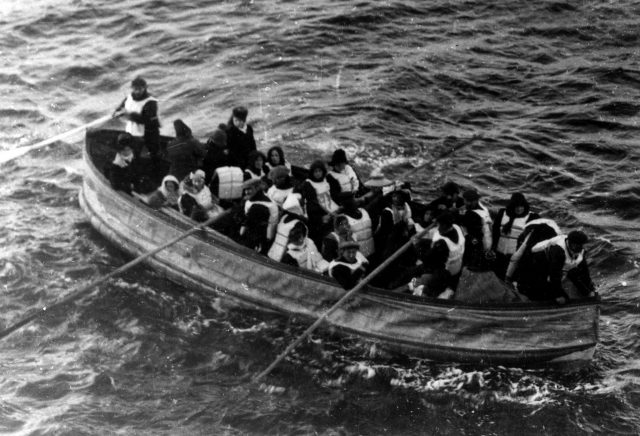
It is easy to conjure up images of the RMS Titanic, but here we see the aftermath of the disaster. In this photo, the ship’s “Collapsible D” lifeboat approaches the RMS Carpathia. “Collapsible D” was the last lifeboat to be lowered from the port side of Titanic.
2. Picking George Washington’s nose?
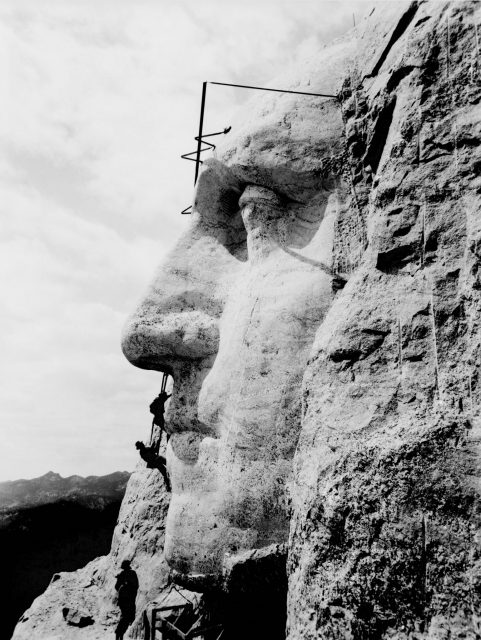
Although this photo looks a bit like George Washington is getting his nose cleaned out, it is actually a behind-the-scenes look at the construction of Mount Rushmore. Here, construction is being undertaken on George Washington’s face. The construction of Mount Rushmore took 14 years and wrapped up on October 31, 1941.
3. Audrey Hepburn’s big debut
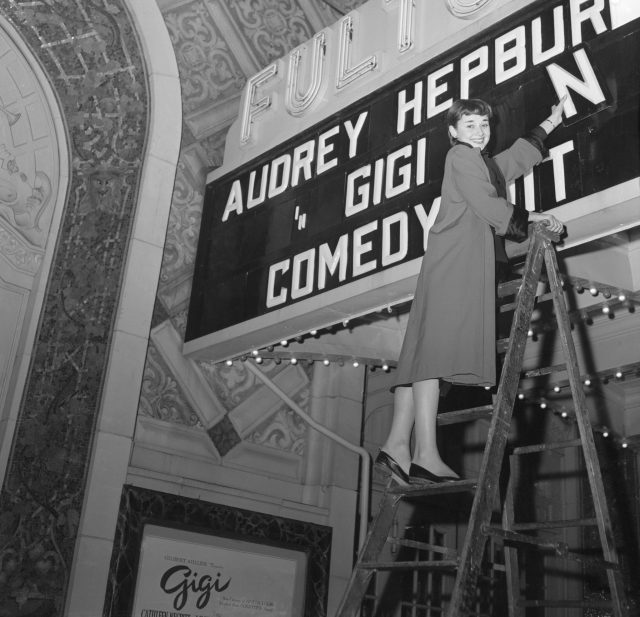
Audrey Hepburn burst on the scene with her portrayal of Gigi in 1951. Here, we see her excited for her big debut as she puts the letters for her own name on the theatre’s marquee.
4. More firsts for Neil Armstrong
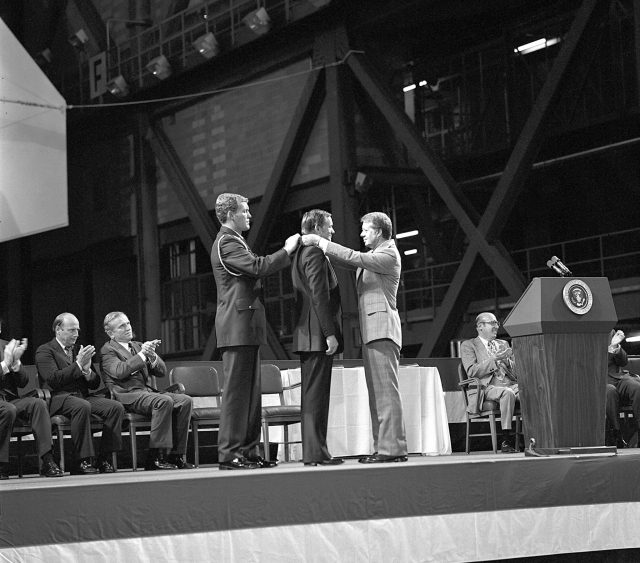
Not only was Neil Armstrong the first person to walk on the moon, but he was also the first-ever recipient of the Congressional Space Medal of Honor in 1978. During this ceremony, then-president Jimmy Carter bestowed this honor on Neil Armstrong and five other space trailblazers, including Frank Borman, Pete Conrad, John Glenn, Gus Grissom, and Alan Shepard.
5. A royal ride
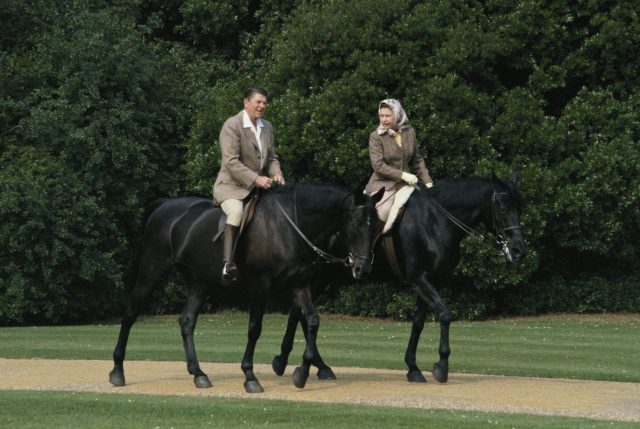
Here we see then-president Ronald Reagan and Queen Elizabeth II take a break from diplomatic discussions to ride horses around Windsor Castle. The official state visit between the Queen and President lasted only 48 hours, but according to The Telegraph, nearly 500 pages worth of British diplomatic files were created.
6. Raquel Welch stirring up drama on ‘The Dick Cavett Show’

In the summer of 1970, Dick Cavett had one of the most interesting episodes ever, featuring Raquel Welch and Janis Joplin. Welsh was talking about a controversial sex-change comedy she worked on when Joplin chimed in that she couldn’t follow the film because it “kept changing.” Welch, remaining cool, responded, “Well the whole movie is about change!” Although these topics were still very much taboo, the audience erupted in laughter.
7. Harry Houdini jumps off Harvard bridge
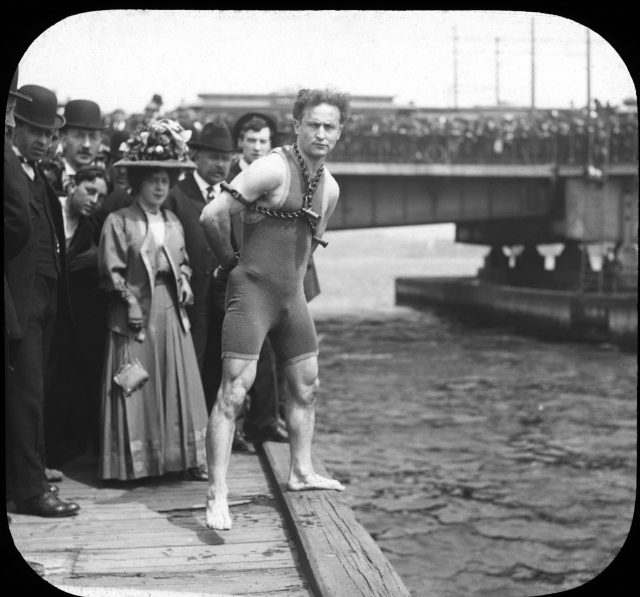
Harry Houdini was one of the most famous magicians of all time, and specialized in escape tricks. In this photo, Houdini is preparing for a death-defying stunt in 1908. Houdini locked himself up in chains for this specific trick and took a 30-foot plunge into the Charles River. His hands were handcuffed behind his back and chained to a collar around his neck. The Boston Globe estimated that 20,000 people showed up to watch the event that lasted only 40 seconds. Houdini emerged from the water with the shackles in his hands.
8. A web of wires
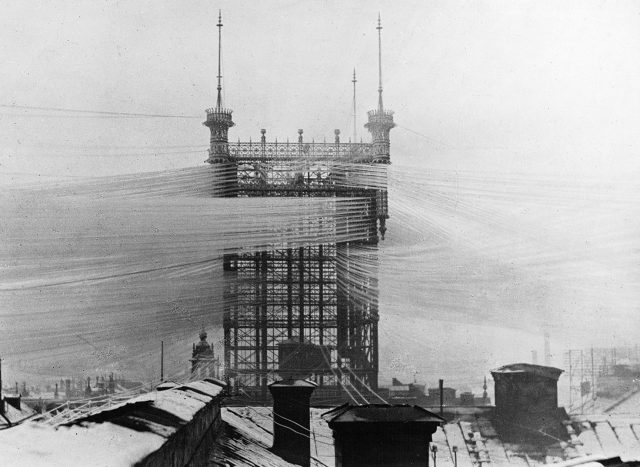
Today, we aren’t even used to having cords attached to our phones anymore, so this photo seems especially crazy. Early telephones required their own physical line to connect a home or business to a phone exchange where a live operator manually patched the call through.
In Stockholm, Sweden, the central telephone exchange was the Telefontornet — a giant tower designed in the early 1890s that connected over 5,000 telephone wires coming from every direction across the city. Understandably, the residents of Stockholm felt it was an eyesore, and it was torn down in 1953 after the tower caught on fire.
9. Preparing for the worst

Often, when we study war, we study military battles that occurred during the conflict. It is easy to forget that civilians are innocent bystanders in these events. In 1938, the British Government gave everyone, including babies, gas masks to protect them in case Germans dropped bombs over England. Here, we see nurses testing gas masks for babies at a London hospital in 1940 to ensure they would be prepared if the Germans did drop poisonous bombs over the city. Luckily, these gas masks were never put to the test in a real gas attack.
10. Where’s your head?
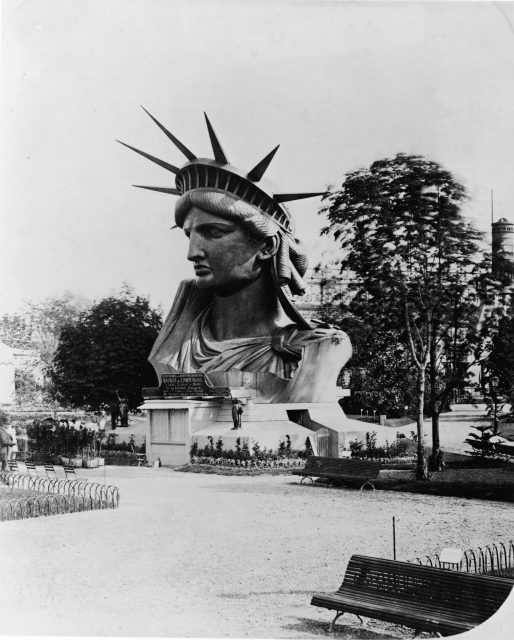
The Statue of Liberty has become synonymous with New York City. The Statue of Liberty was given to the United States by France, but it was constructed over a period of eight years before it made its way over to the States. The Statue of Liberty’s arm was exhibited in Philadelphia at the 1876 World’s Fair and her head was exhibited in Paris at the 1878 World Fair.
11. Major headache
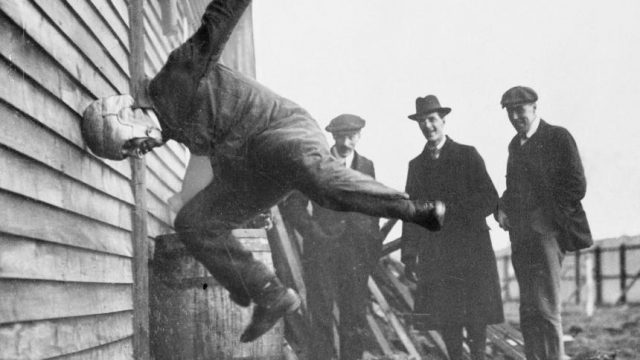
More from us: These Vintage Photos Offer A Glimpse Into Life During The 1800s
Originally, this photo was thought to be someone testing out a football helmet, but upon further investigation, it turns out it is testing a helmet meant for pilots. Regardless of its purpose, the helmet is a very important invention and this is a very humorous photo!
